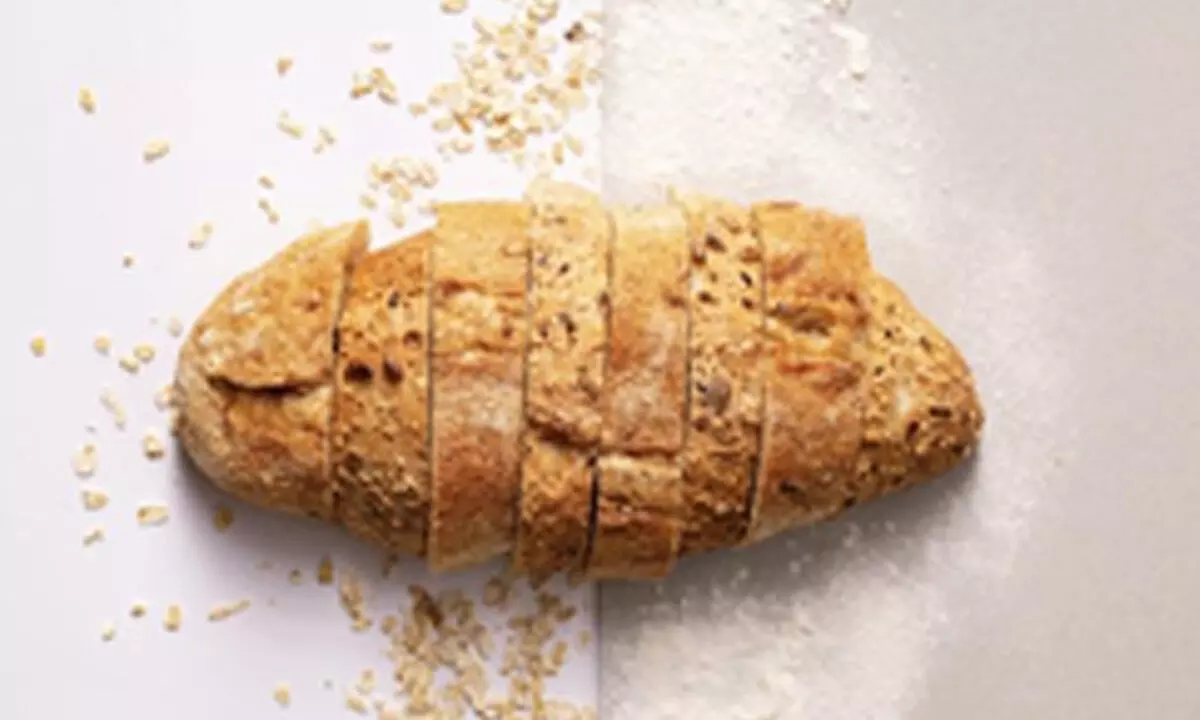Live
- All you need to know about PAN 2.0
- Akasa Air redefines travel experience with industry-first offerings
- MP: Residents stage protests against liquor shop in Indore
- Telugu Actor Shri Tej Booked for Alleged Cheating and False Promise of Marriage in Live-in Relationship
- Toyota Kirloskar Motor Celebrates 1 Lakh Urban Cruiser Hyryder on Indian Road
- MLS: New York City FC part ways with head coach Nick Cushing
- Delhi CM says Centre cutting AAP voters’ names from rolls, BJP hits back
- Hyderabad Metro Rail Phase-II Works to Begin in Old City in January 2025
- Odisha: 668 persons killed in human-elephant conflicts in last three years
- DEFENDER JOURNEYS: TO EMBARK ON ITS THIRD EDITION FROM NOVEMBER 2024
Just In

Bread, a simple yet remarkable creation, has been a faithful companion to humanity for millennia. Whether it's the comforting aroma of a fresh loaf wafting through a kitchen or the crispy exterior of a well-baked baguette, bread has woven itself into the fabric of cultures worldwide.
New Delhi: Bread, a simple yet remarkable creation, has been a faithful companion to humanity for millennia. Whether it's the comforting aroma of a fresh loaf wafting through a kitchen or the crispy exterior of a well-baked baguette, bread has woven itself into the fabric of cultures worldwide.
From the bustling streets of Paris to the serene villages in India, bread transcends borders, offering diverse flavours and forms. As we delve into bread, let's uncover seven fun facts that may surprise even the most avid bread enthusiasts.
Bread is made up of baked dough
At the heart of every loaf, roll, or baguette is a fundamental process – baking dough. This seemingly straightforward practice is a culmination of culinary artistry and science. While the ingredients in dough can vary, the essentials include water and wheat flour. However, the magic happens when additional components like yeast and salt join the mix.
Most bread is leavened
Most bread owes its airy texture to the process of leavening. This entails incorporating yeast or another rising agent into the dough. The tiny microorganisms in yeast consume sugars and release carbon dioxide, causing the dough to expand and rise. While leavened bread is the norm, exceptions like chapati, roti, and naan exist, showcasing the diverse ways in which cultures have embraced this culinary staple.
The biggest loaf of bread ever made
Imagine a loaf of bread so colossal it holds a Guinness World Record. In 2008, Joaquim Gonçalves in Brazil achieved this feat, baking a loaf that weighed a staggering 1,571 kilograms. This great creation symbolized dedication and passion for baking, earning its place in history on Guinness World Records Day. It serves as a reminder that the sky – or, in this case, the oven – is the limit for bread.
Kinds of bread
The world of bread is vast and diverse, boasting over 100 varieties. From the robust flavours of pumpernickel to the tangy notes of sourdough, each type tells a unique story rooted in tradition and regional influences. Whether you're savouring the earthiness of whole wheat or indulging in the cloud-like texture of white bread, the sheer variety is a testament to the versatility and adaptability of this ancient culinary wonder.
Breaking the bread
Beyond its gastronomic appeal, bread holds symbolic significance as a universal sign of peace in many cultures. It's a food shared across tables, connecting people from diverse backgrounds. The act of breaking bread together fosters a sense of camaraderie, transcending cultural and linguistic boundaries. In a world often divided, this shared custom reinforces the notion that, at its core, humanity is bound by everyday sustenance and a desire for harmony.
Bread as currency
In the annals of history, bread was not just sustenance; it was once a form of currency. In ancient Egypt, the importance of bread reached such heights that it served as a medium of exchange, akin to modern-day money. This intriguing fact emphasizes how vital bread is to daily existence, serving as a means of cash and representing stable economic conditions.
To treat infections Ancient Egyptians used mouldy bread
The resourcefulness of ancient civilizations often surprises us, and the ancient Egyptians were no exception. In strikingly demonstrating their medical ingenuity, they used mouldy bread to treat infections. The mould produced chemicals that inhibited bacterial growth, showcasing an early understanding of the potential therapeutic properties within everyday ingredients. This historical nugget not only adds depth to the narrative of bread but also underscores the interconnectedness of culinary and medicinal practices in ancient cultures.
In gist, as we revel in the delightful aroma and taste of our favourite bread, let's also appreciate the rich tapestry of stories, traditions, and innovations that have shaped this timeless culinary treasure. From the humble beginnings of dough to the grandeur of record-breaking loaves, bread continues to be more than just a staple – it's a cultural touchstone that unites us all.

© 2024 Hyderabad Media House Limited/The Hans India. All rights reserved. Powered by hocalwire.com






